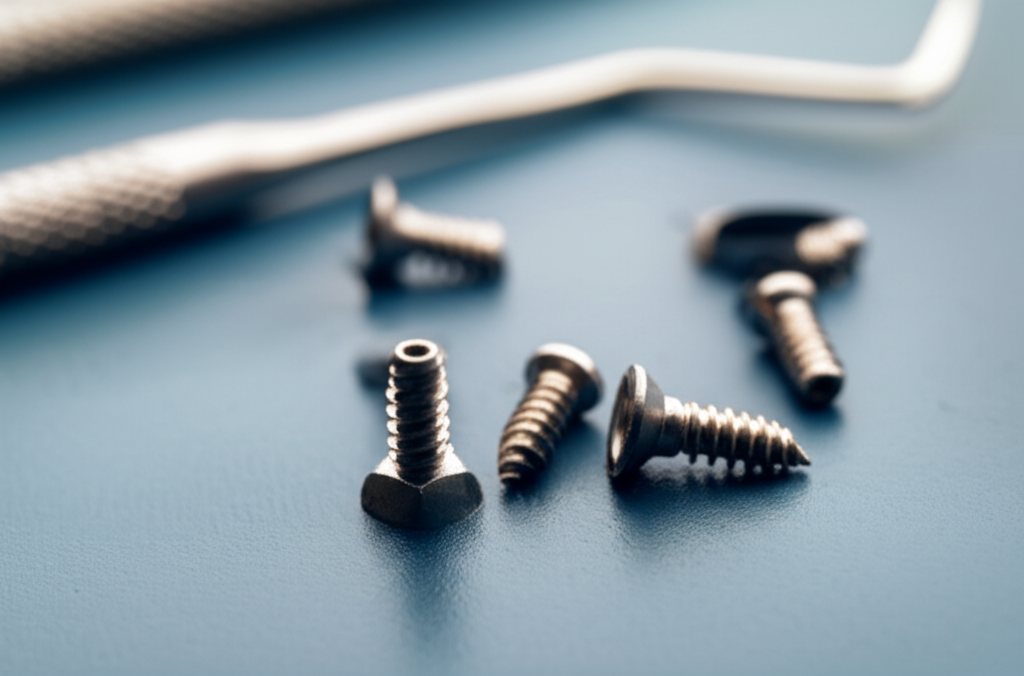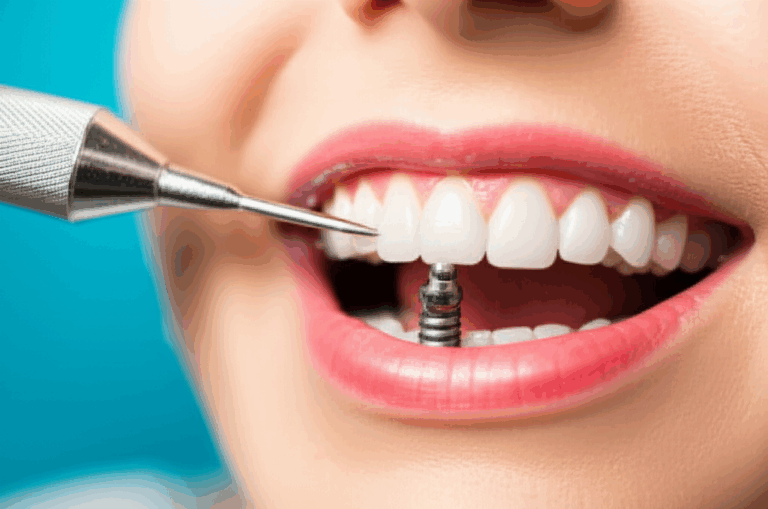
Are Screwless Dental Implants Cheaper? A Clear and Simple Guide
Dental implants can fix missing teeth and bring back your smile. But should you pick screwless dental implants because they might be cheaper? Let’s break this down simply, so you can decide what works best for you, your wallet, and your health. Read on to learn what “screwless” really means, how much implants might cost, and which type could be best for your needs.
Table of Contents
- What Are Dental Implants?
- Screwless vs. Traditional Dental Implants: What’s the Difference?
- Why Do People Think Screwless Implants Are Cheaper?
- How Much Do These Implants Cost?
- What Does “Total Cost” Really Mean?
- Which Implant Lasts Longer?
- Can You Save Money in the Long Run?
- What are the Benefits and Drawbacks of Screwless Implants?
- When Is a Screwless Implant a Good Idea?
- How to Make the Best Choice for Your Smile
- FAQs
- Main Points to Remember
What Are Dental Implants?
Let’s start at the beginning. Dental implants are small posts your dentist puts in your jaw when you’re missing a tooth. These posts act like roots. Once your bone heals around them (this is called osseointegration), a dentist can put a fake tooth, called a crown, on top.
There are two main types:
- Traditional (Screw-Retained) Implants: Made in two parts. Usually, the bottom (fixture) is titanium and the top (abutment) attaches with a screw. The crown goes on top.
- Screwless (One-Piece or Cemented) Implants: Often one piece, usually made from zirconia (a tough white ceramic). No separate screw; the crown gets glued or is built right on.
Both types can help you eat, talk, and smile. But there are big differences—especially when it comes to price.
Screwless vs. Traditional Dental Implants: What’s the Difference?
You might hear all kinds of words in the dental office: metal-free, ceramic, zirconia, one-piece, two-piece, cement-retained, or even holistic implants. Here’s what you need to know.
Traditional Titanium Implants:
- Material: Most are made from titanium metal.
- Design: Two parts (fixture and abutment) held together with a screw.
- Options: Lots of brands and styles.
- Common Uses: Used for most missing tooth fixes.
Screwless or Zirconia Implants:
- Material: White, tooth-colored zirconia or ceramic.
- Design: Usually just one piece (no small screw joining the parts).
- Nickname: “Metal-free” since they have no metal in them.
- Placement: Sometimes harder to place; not every clinic does them.
The main difference? Screwless implants use less hardware—but are made from fancier stuff. And not many dentists offer them, so you might pay more.
Why Do People Think Screwless Implants Are Cheaper?
It seems like they should be, right? Less hardware should mean less money. That’s what I thought, too.
- Fewer pieces: Just one part, so maybe it costs less to make.
- Simple to put together: No tiny screws and tricky steps.
- Can be quicker to put in: So the dentist may finish faster.
But after working with a bunch of dental offices and labs, I learned that’s not always true.
Here’s how it really goes:
- Stuff like zirconia or ceramic costs more than titanium.
- Making a one-piece implant takes special tools.
- Not many brands and dentists make or use screwless ones, so less competition, and prices stay high.
Most people find that screwless implants are not always the best bargain—and lots of times, they cost more.
How Much Do These Implants Cost?
You want numbers, so let’s be real. Prices depend on your location, the dentist’s office, your insurance, and how tricky your case is. But in general:
Traditional (Titanium) Implant Cost
- Implant part: $800–$2,500
- All-in (with crown, abutment, and surgery): $3,000–$7,000
Screwless (Zirconia/Ceramic) Implant Cost
- Implant part: $1,000–$3,000
- All-in (with crown): $4,000–$8,000
Here’s a simple table so you can compare:
| Implant Type | Fixture Cost | Total Cost (Implant + Crown) |
|---|---|---|
| Traditional/Titanium | $800–$2,500 | $3,000–$7,000 |
| Screwless/Zirconia | $1,000–$3,000 | $4,000–$8,000 |
Source: Clinical Oral Implants Research, 2021
You can see, screwless implants are almost never cheaper. Most of the time, you’ll pay the same or even more.
Want a closer look at what’s included? Check out our page on dental implant services.
What Does “Total Cost” Really Mean?
It can be tempting to look just at the price tag. But smart shoppers ask, “What am I really paying for?”
Dental implant cost is more than just the implant itself. You might pay for:
- Consultations and x-rays
- Extractions or bone work
- The material used (zirconia or titanium)
- Surgery (sometimes with you asleep)
- Lab fees for making the tooth
- Extra check-ups or tweaks
- Aftercare
And don’t forget, big cities cost more. A clinic in New York or LA will charge more than one in a small town.
It’s smart to work with a good digital dental lab that can show you all the prices ahead of time. Always ask for a clear price sheet.
Which Implant Lasts Longer?
This is a key question!
Traditional titanium implants have been used for a long time. Studies show they last 10–20 years or more, with most doing great. Sometimes, the screw gets loose or the top tooth (crown) needs switching. Usually, this is easy to fix.
Screwless zirconia implants also do well—most last for years and are strong. But zirconia can break easier than metal. If it cracks or the crown snaps off, you often have to take out the whole thing and start over. That’s a big deal.
So, both types can last, but there’s a bigger risk of needing a pricey replacement if you choose screwless.
Can You Save Money in the Long Run?
Here’s the question everyone wants to know: Will one kind of implant help you avoid spending more later?
Here’s what might go wrong:
Traditional Implants:
- Screw gets loose: Dentist can usually fix this fast, often for free.
- Crown breaks: Just the top is swapped, the implant stays put.
- Implant fails: Not common, but fixing is costly.
Screwless Implants:
- No screws to mess up (which is good).
- If the crown or part above breaks: Most times, you need a whole new implant—big job, big price.
- Implant cracks: Since zirconia is easy to chip, cracks happen more for heavy chewers.
So, cheaper now doesn’t always mean cheaper later. You might pay more for fixes on screwless implants later.
What are the Benefits and Drawbacks of Screwless Implants?
Let’s be real—screwless implants have some nice perks:
Benefits:
- Looks: They’re tooth-colored, so no dark stuff shows under the gum.
- No metal: Great for people sensitive to metals or who want “holistic” care.
- Less space for germs: One piece can mean less bacteria get in.
But there are real cons too:
- Break easier under heavy bite or grinding
- Not simple to fix. If something breaks, you may need the whole implant swapped.
- Not for everyone. Strict rules on who can get them.
- Less common, so fewer dentists offer them, keeping prices high.
If appearance is most important or you can’t have metal, screwless could be right. Just know the trade-offs.
For more on these options, expert dental ceramics lab teams can help explain what’s best for you.
When Is a Screwless Implant a Good Idea?
I’ve seen people who really needed screwless ceramic implants:
- Bad metal allergy: If metal makes you sick, zirconia is a good pick.
- Front teeth: Need your new tooth to blend in? No metal shadow here.
- Holistic care fans: Some want a metal-free mouth.
- Thin gums: Ceramic looks more real.
But for back teeth, people who chew hard, or have strong bites, titanium wins out most of the time.
As always, talk to a pro at a good implant dental laboratory to figure out what’s right for you.
How to Make the Best Choice for Your Smile
Not sure what to pick? Here’s a quick way to think about it (PAS: Problem–Agitate–Solution).
Problem: You want to fill a gap in your teeth, look good, and NOT spend a fortune.
Agitate: Dental work is pricey. Choose wrong, and you might face more spending or tough fixes later. It’s hard to figure out what will last.
Solution:
- Talk to your dentist. Get the facts on both types.
- Ask for total prices. Get every cost written down.
- Look at the big picture. “Cheaper” can mean simpler, but not always less expensive at the end.
- Check your choices. Ask about both ceramic and metal at your next appointment.
Remember, it’s about what fits your needs best, not just the lowest price.
FAQs
Q: Are all metal-free implants screwless?
A: Most are, and are made out of zirconia, but some dentists use two-piece zirconia kinds that are a bit like titanium. Always ask how it works.
Q: Do screwless implants last as long as titanium?
A: Sometimes, but they can break more easily, especially if you chew or grind hard.
Q: Will my insurance pay for screwless implants?
A: Most insurance doesn’t cover either type. Most pay out of their own pocket or use payment plans.
Q: Are there cheaper ways to replace missing teeth?
A: Sometimes! Bridges or dentures can cost less at first. You can ask about these at your dental office.
Main Points to Remember
- Screwless implants are rarely cheaper than standard ones, even with fewer parts.
- Think about long-term costs. Fixing screwless implants can get pricey.
- Titanium implants work well, are easier to repair, and have proven track records.
- Ceramic implants look great and work for folks with allergies or who want “metal-free,” but can break more easily.
- Always ask for a full cost list and talk to your dentist about repair costs.
- Pick what’s right for you—don’t decide only on the price.
If you want a nice, lasting smile, take your time, ask lots of questions, and work with a dental team you trust. The best choice fits your mouth, your life, and your wallet.








